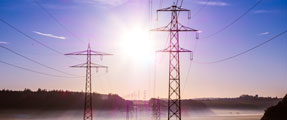President Obama signed the Hydropower Regulatory Efficiency Act of 2013 on August 9, 2013. Congress passed the law to encourage hydroelectric development by streamlining the process for developing and operating small hydro projects that are subject to regulation by the Federal Energy Regulatory Commission (FERC).
The law attempts to remove regulatory hurdles facing hydropower development in the United States by: 1) increasing the maximum capacity size for exemptions from FERC licensing of conduit hydroelectric facilities; 2) amending the Public Utility Regulatory Purposes Act (PURPA) to increase the installed capacity of small hydroelectric power projects; 3) allowing FERC to extend the term of preliminary permits to five years; and 4) directing FERC to conduct a feasibility investigation regarding expediting licensing for non-powered dams and closed-loop storage projects.
The law is intended to unleash the nation’s significant growth potential in hydroelectric resources. Congress recognized that 7% of the nation’s power comes from hydroelectric resources, but only 3% of the nation’s dams generate electricity. The law should reduce the costs and regulatory burdens for some hydroelectric development, primarily for small projects that do not have a harmful impact on fish and the environment.
Disclaimer
These materials are intended to as informational and are not to be considered legal advice or legal opinion, nor do they create a lawyer-client relationship. Information included about previous case results does not assure a similar future result.


